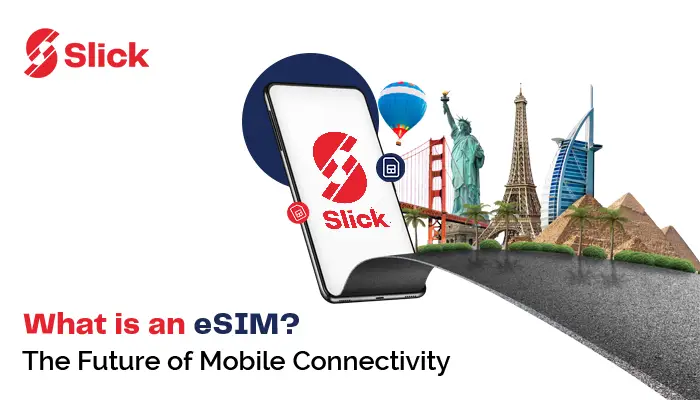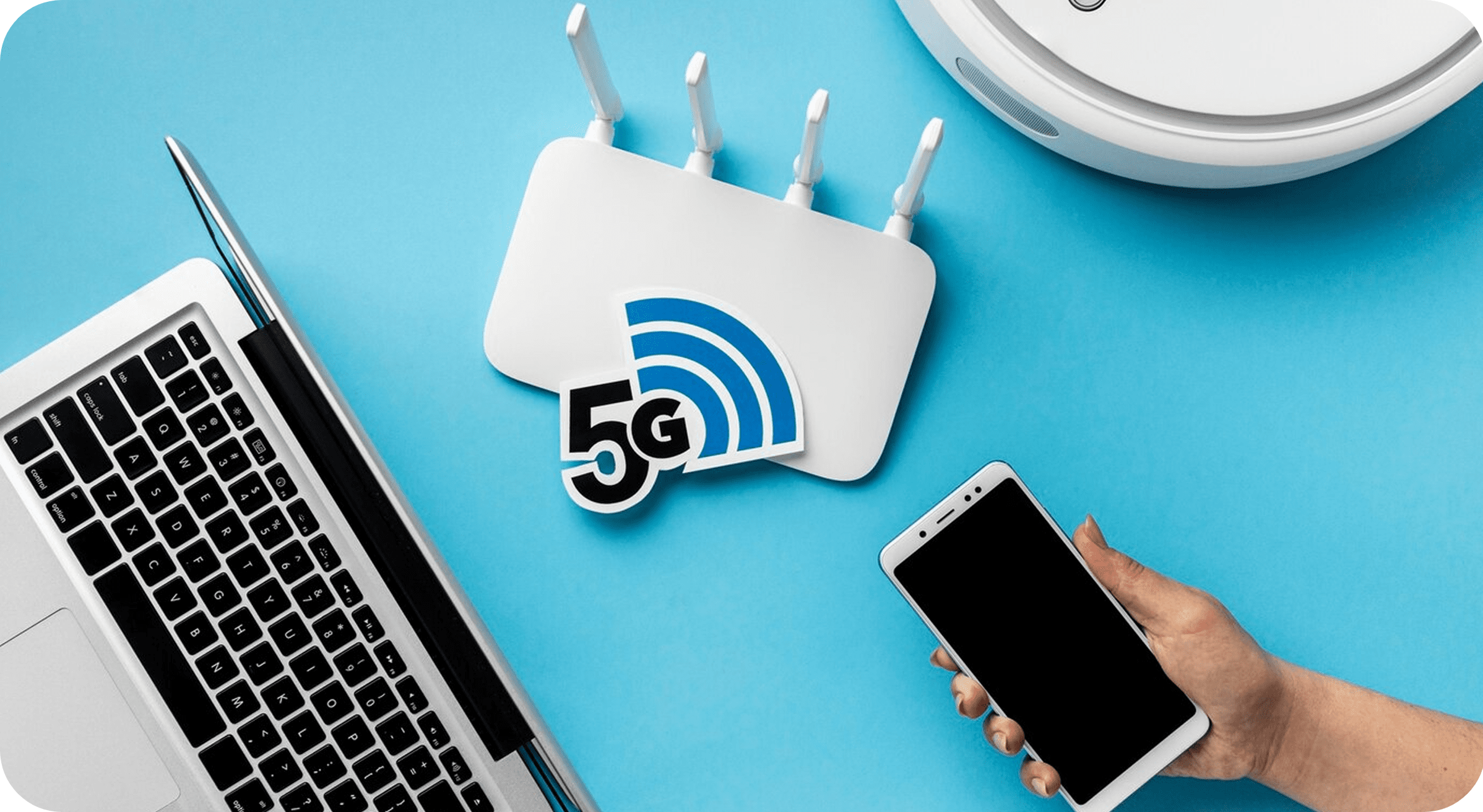Table of Contents
▲
-
- eSIM Setup and Activation Guides: Your Step-by-Step Handbook
- How to Activate eSIM on a Smartwatch (Apple Watch, Samsung Galaxy Watch, etc.)
- How to Transfer eSIM When Switching Phones?
- eSIM vs. Traditional SIM: The Future of Mobile Connectivity
- eSIM vs. Dual SIM: How Are They Different?
- eSIM vs. Traditional Roaming: Which One Should You Use for Travel?
- eSIM for Travel & Global Use: Stay Connected Anywhere, Anytime
- Best eSIM Providers for International Travelers
- How to Use eSIM for Dual-Network Connectivity While Traveling?
- How to Use eSIM for Dual-Network Connectivity While Traveling?
- How to Use eSIM for Dual-Network Connectivity While Traveling?
- eSIM for Frequent Flyers: Save Money on Roaming Charges
- eSIM for Frequent Flyers: Save Money on Roaming Charges
- FAQ
- eSIM Setup and Activation Guides: Your Step-by-Step Handbook
Wondering how to switch mobile networks without swapping a physical SIM card? You’ve heard of eSIM but are unsure how it works. You’re not alone. Many people are confused about eSIM, how it works, and whether it’s worth switching. In today’s fast-paced digital age, traditional SIM cards are becoming outdated. You’ve probably experienced the inconvenience of losing a SIM card, juggling multiple SIMs for trips, or struggling with activation problems. eSIM, or embedded SIM, is revolutionizing the process by eliminating the need for a physical card, enabling you to activate a mobile eSIM plan with a few clicks.
But with this technology comes uncertainty— How do you set it up? Does it work with your phone? What if you switch devices?
This guide will answer all your questions about eSIM. By the end of this post, you’ll understand exactly how eSIM works, how to set it up on different devices, and why it’s becoming the future of mobile connectivity. Whether you use an iPhone or Android, travel a lot, or want a hassle-free experience with mobile plans, you’ll get step-by-step guides and useful information to make switching easy.
Before you can start enjoying the benefits of eSIM, you must know how to set it up. Let’s dive into the activation process.
eSIM Setup and Activation Guides: Your Step-by-Step Handbook
Setting up an eSIM might sound like a complicated process, but it’s simpler than you imagine. Wouldn’t activating your mobile plan with a few taps without messing around with small SIM cards be wonderful?
This tutorial will guide you on whether you have an iPhone, Android, smartwatch, or even changed devices.
How to Set Up eSIM on iPhone (Step-by-Step Guide)
Apple has made eSIM activation incredibly simple. By following these steps, you can smoothly set up your eSIM:
- Check Compatibility: Go to Settings > General > About and look for “Carrier Lock.” If it says “No SIM restrictions,” your iPhone supports eSIM.
- Obtain a QR Code or Activation Details: Your carrier will provide a QR code or manual activation details.
- Add eSIM to Your iPhone: Navigate to Settings > Cellular > Add eSIM and scan the QR code or enter details manually.
- Set as Primary or Secondary Line: Choose whether eSIM should be your primary number or a secondary one for Dual SIM use.
- Activate the Plan: Restart your phone if necessary, and ensure your eSIM is active under Settings > Cellular.
> Pro Tip: If you’re switching from a physical SIM, use Settings > Cellular > Convert to eSIM (available on newer iPhones).
Now that your iPhone is ready, what if you’re an Android user? Let’s set up eSIM on Samsung, Google Pixel, and other Android devices.
How to Set Up eSIM on Android (Samsung, Google Pixel, and More)
eSIM activation varies slightly depending on your phone’s brand, but the process remains straightforward.
Wouldn’t it be convenient to skip store visits and switch networks instantly?
Steps to Set Up eSIM on Android:
- Check Device Compatibility: Go to Settings > About Phone > SIM Status to confirm eSIM support.
- Get the QR Code or Activation Details: Your carrier will provide these via email or app.
- Add the eSIM Profile: On Samsung, go to Settings > Connections > SIM Manager > Add eSIM. On Google Pixel, navigate to Settings > Network & Internet > SIMs > Add eSIM.
- Scan the QR Code or Enter Details Manually: Follow on-screen prompts to complete activation.
- Set as Primary or Secondary SIM: Configure your data and call preferences under SIM Settings.
Pro Tip: If your Android device supports Dual SIM with eSIM, you can switch networks on the go without swapping SIM cards.
Now that we’ve covered phones, what about smartwatches?
Let’s explore how to activate eSIM on wearables like the Apple Watch and Samsung Galaxy Watch.
How to Activate eSIM on a Smartwatch (Apple Watch, Samsung Galaxy Watch, etc.)
eSIM smartwatches allow you to stay connected even when you’re without your phone. It’s like carrying a mini smartphone on your wrist!
Steps to Activate eSIM on a Smartwatch:
- Ensure Your Watch and Carrier Support eSIM: Check your carrier’s website for supported devices.
- Pair Your Watch with Your Phone: Open the companion app (Watch app for Apple, Galaxy Wearable for Samsung).
- Activate Mobile Service: Select Mobile Plan > Add Plan and scan the eSIM QR code.
- Complete Activation: Your smartwatch will connect to the mobile network after a few minutes.
Pro Tip: Ensure that your carrier supports standalone smartwatch plans if you prefer your watch to function independently of being near your phone. Got a new phone? Let’s show you how to switch your eSIM without disrupting service.
How to Transfer eSIM When Switching Phones?
Want to change phones but don’t want to lose your number? Unlike physical SIMs, eSIMs don’t simply pop out. So how do you transfer them?
Steps to Transfer eSIM to a New Phone:
- Check If Your Carrier Supports eSIM Transfer: Some allow direct transfer, while others require deactivation and reactivation.
- On iPhone: Go to Settings > Cellular > Transfer eSIM and follow the on-screen instructions.
- On Android: Open Settings > Network & Internet > eSIM and look for a transfer option. If unavailable, contact your carrier.
- Re-Scan Your QR Code (If Needed): If transfer isn’t automatic, use your carrier’s original QR code to activate eSIM on your new phone.
Pro Tip: Before resetting your previous phone, always turn off the eSIM to prevent activation complications on your new phone. Moreover, eSIM transfer options vary by carrier and device, so checking with your provider is crucial.
But what if you are using multiple numbers? Let’s see how you can easily switch between several eSIM profiles. Now that you understand how to configure and manage eSIM, you may wonder: Is eSIM better than a physical SIM? Or compare to Dual SIM and traditional roaming features?
Let’s analyze it below by comparing eSIM with other connectivity solutions and discussing its top benefits.
eSIM vs. Traditional SIM: The Future of Mobile Connectivity
Have you ever had trouble swapping SIM cards while traveling or upgrading your phone?
What if you never had to lose a tiny SIM card again?
eSIM technology is revolutionizing mobile connectivity, but how does it stack up against the traditional SIM cards and other alternatives such as Dual SIM? Let’s demystify it.
eSIM vs. Physical SIM: Which One is Better?
The battle between eSIM and physical SIM is like comparing streaming services to DVDs. Both work, but one is much more convenient.
Key Differences:
- Convenience: No need to insert or swap a card. eSIM is built into your device and can be activated remotely.
- Security: Unlike physical SIMs, eSIMs can’t be stolen or removed if your phone is lost.
- Flexibility: Easily switch carriers without visiting a store.
Still, there are some issues. The eSIM is not supported by all carriers yet, and you can’t remove it if your phone has connectivity issues. Moreover, eSIM availability and transferability depend on carrier support.
> Pro Tip: Verify that your carrier has eSIM transfers available before switching if you change phones often.
Now, what about Dual SIM devices that use both physical and eSIM? Let’s compare.
eSIM vs. Dual SIM: How Are They Different?
If you’ve ever had to carry two phones, one for work and one for personal use, you’ll love Dual SIM technology.
But what about an eSIM-based Dual SIM versus a traditional Dual SIM with two physical slots?
- eSIM Dual SIM is digital-first: Instead of inserting two physical SIMs, one (or both) SIMs are stored digitally on your device.
- Better for travel: With eSIM, you can instantly add a local plan without removing your primary SIM.
- Device compatibility: Some smartphones offer only eSIM + physical SIM, while others support dual eSIM profiles. Plus, Dual SIM functionality varies by device and carrier.
Think of Dual SIM as having two Netflix profiles under one subscription. You can switch between them without having to log out.
So, is eSIM just a trend, or is it the future? Let’s explore.
Why eSIM is the Future of Mobile Connectivity
Imagine a world where your phone connects to the best network for you. No SIMs, no store runs, just plug-and-play connectivity. That’s what eSIM is making possible. However, widespread adoption of eSIM still depends on carrier support and regional regulations.
- Smartphones, tablets, wearables, and even cars are adopting the eSIM technology.
- Converging 5G and AI will facilitate smart network switching and improve global coverage.
- Tech giants like Apple and Google are pushing eSIM adoption by eliminating SIM trays in some devices.
Think of eSIM as a form of Wi-Fi passwords stored in the cloud—you never need to enter them; your phone connects automatically. Of course, there are advantages and disadvantages to all technologies. Let’s talk about the advantages and disadvantages of eSIM.
Advantages & Disadvantages of Using eSIM
While eSIM is extremely versatile, it is not perfect.
So, is eSIM right for you? Let’s examine the advantages and disadvantages.
Advantages:
- Instant activation: No need to wait for a physical SIM delivery.
- Multiple profiles: Use one number for work, and another for travel.
- More secure: Can’t be stolen like a physical SIM.
Disadvantages:
- Limited carrier support: Some networks still don’t offer eSIM plans.
- Not easily transferable: Switching eSIMs between devices isn’t always seamless.
- Requires internet for activation: Setting up a new plan can be tricky if you lose connectivity.
> Pro Tip: If you rely on frequent SIM swaps, check if you have an easy eSIM transfer option from your network. Also, remember that eSIM transferability and activation depend on carrier policies and device compatibility.
Now, let’s compare eSIM with another major alternative: traditional roaming.
eSIM vs. Traditional Roaming: Which One Should You Use for Travel?
Ever returned from a holiday to find an enormous roaming bill? With eSIM, that can be prevented.
- Traditional roaming is expensive, with unspecified charges.
- eSIM lets you buy a local or regional data plan at the time, usually at a fraction of the price.
- No need to scramble around for a SIM card at the airport anymore. Just scan a QR code and eSIM activate Guide and plan in minutes.
Using eSIM when on travel is like downloading an offline map rather than buying data while abroad.
Speaking of travel, let’s dive deeper into how eSIM can change how we connect globally in the next section.
eSIM for Travel & Global Use: Stay Connected Anywhere, Anytime
Have you ever been in a foreign country and had difficulty finding a local SIM card?
Or worse, failing to turn off roaming and coming home with a bill through the roof?
eSIM ends these vacation nightmares with hassle-free connectivity without the physical SIM swaps. Whether you’re a digital nomad, business traveler, or adventure explorer, this guide will uncover how to get the most out of eSIM for international use.
Best eSIM Providers for International Travelers
With numerous eSIM vendors available, how do you choose the optimal one that best addresses your travel needs? Some emphasize price, but others have the widest coverage for many nations.
Top eSIM Providers for Travelers:
- Slick
- Nomad
- Holafly
Choosing an eSIM provider is like picking the right travel insurance. You need a balance of cost, coverage, and reliability. So you’ve got the best providers now; how do you choose the best plan for your particular trip? Let’s get to it.
How to Choose the Best eSIM Plan for Travel?
With so many eSIM plans available, how do you know which is best for your trip? Instead of overpaying for unnecessary data, consider these key factors:
- Destination Coverage: Does the provider cover all your travel locations?
- Data Needs: Are you just checking emails or streaming videos? Pick a plan accordingly.
- Plan Validity: Some plans last 7 days, others up to a month. Choose based on your stay.
- Pricing & Value: Compare cost per GB across providers.
- Tethering Support: Some eSIMs don’t allow hotspot usage, which is crucial for laptop work.
> Pro Tip: For brief visits, opt for pay-as-you-go. For longer stays, local or unlimited plans cost less.
What if you need more than one network for better coverage? Let’s explore Dual-Network Connectivity.
How to Use eSIM for Dual-Network Connectivity While Traveling?
Ever got stuck in some remote place with no signal? Imagine if you could automatically switch to an alternate network for improved coverage. You can with eSIM!
-
How to Enable Dual-Network Connectivity:
- Use Your Primary SIM for Calls & Texts: Keep your home number active for communication.
- Set eSIM for Data: Buy a local or regional eSIM plan for affordable internet.
- Manually Switch if Needed: On iPhone, go to Settings > Cellular, and on Android, go to SIM Manager to toggle networks.
Now, what if you travel frequently? Let’s see how eSIM saves money on roaming charges.
eSIM for Frequent Flyers: Save Money on Roaming Charges
Do you still pay high roaming fees or switch to an eSIM if you travel frequently? The decision is clear: eSIM saves frequent travelers big.
- Avoid unpredictable roaming charges by using local eSIM plans.
- Instantly switch networks without hunting for physical SIM cards.
- Keep your primary number active while using an affordable data plan abroad.
With eSIM, it’s like carrying a travel wallet with several currencies. No money-changing at every stop; you’re always ready.
But what if you’re hopping between multiple countries? Let’s explore regional and global plans.
How to Use eSIM for Multiple Countries (Regional & Global Plans)
Do you need to purchase a new eSIM for every place you visit? Not necessarily! Some carriers offer regional and international eSIM plans that cover multiple destinations in a single activation.
- Regional eSIMs: Cover areas like Europe, Asia, or North America with one plan.
- Global eSIMs: offer worldwide access, albeit at a higher cost.
- Best for digital nomads & business travelers who move frequently.
> Pro Tip: A regional eSIM will be less expensive than buying individual country plans if your trip includes multiple countries.
Now that we’ve covered eSIM for international travel, let’s explore how eSIM is transforming industries and devices in the next section.
eSIM for Devices & Industries: Transforming Connectivity Across Tech
Have you ever imagined what the world would be like without physical SIM cards? Picture a world where all devices, including your phone and smartwatch, connect effortlessly without a small plastic chip. That future is already here with eSIM technology. But which devices support eSIM, and how is it transforming industries outside of smartphones?
Let’s dive in.
List of Smartphones That Support eSIM in 2025
Is your smartphone set for the eSIM revolution? Although top brands have welcomed eSIM, not every device currently supports it. Here’s a revised list of eSIM-enabled smartphones in 2025:
Apple
- iPhone 15 Series (eSIM-only in the U.S.)
- iPhone 14, 13, 12, and 11 Series
- iPhone SE (2022)
Samsung
- Galaxy S24, S23, and S22 Series
- Galaxy Z Fold 5, Flip 5
- Galaxy Note 20 Ultra
- Pixel 8, 7, 6, and 5 Series
Think of eSIM as the shift from CDs to streaming digitally, which is less hassle and more convenient.
But smartphones are just the beginning. What about other gadgets, such as smartwatches and laptops?
eSIM in Smartwatches, Tablets, and Laptops: How It Works
Ever wished your smartwatch could stay connected without your phone? With eSIM, it can! Smartwatches, tablets, and laptops are now equipped with eSIM to ensure seamless connectivity.
- Smartwatches (Apple Watch, Samsung Galaxy Watch) use eSIM to receive calls and texts without a phone nearby.
- Tablets (iPads, Samsung Galaxy Tab) allow cellular internet access on the go.
- Laptops (Microsoft Surface, Lenovo ThinkPad) provide built-in LTE for remote work without Wi-Fi.
> Pro Tip: If you’re always on the move, getting an eSIM-enabled laptop can eliminate the need for Wi-Fi hotspots.
Beyond personal devices, eSIM is also transforming the Internet of Things (IoT).
How eSIM is Used in IoT and Smart Devices
How do self-driving cars, smart homes, and industrial sensors remain connected without manual SIM changes? eSIM is the answer.
- Connected cars use eSIM for navigation, software updates, and emergency services.
- Smart home devices (like security cameras) rely on eSIM for uninterrupted monitoring.
- Industrial IoT (like logistics tracking) benefits from eSIM’s global reach and remote management.
Think of eSIM in IoT as a language translator. It ensures devices can speak to each other effortlessly on networks all over the globe.
With eSIM increasing adoption in industries, security is now the utmost concern. Let us understand how to safeguard your eSIM and solve issues in the following section.
eSIM Security and Troubleshooting: How Safe Is Your Digital SIM?
In a world where digital threats are growing, can eSIM technology truly be trusted? Is it more secure than a traditional SIM card, or does it introduce new vulnerabilities?
As eSIM adoption rises, so do hacking, fraud, and recovery concerns. In this section, we’ll break down how secure eSIM is, how to protect it, and what to do if something goes wrong.
How Secure is eSIM compared to a Physical SIM?
What’s safer—a plastic SIM that can be removed or a digital one that’s installed? Unlike removable physical SIMs that can be stolen or switched out for scamming (SIM swapping attacks), eSIMs are installed in your device, so unauthorized access is much harder.
- Encrypted Profiles: eSIM credentials are encrypted with sophisticated encryption, making them more difficult to clone.
- Remote Locking: In case your phone gets lost, you can remotely lock the eSIM to prevent misuse.
- No SIM Swapping: Cybercriminals can’t physically remove an eSIM, reducing fraud risks.
Your eSIM is like a bank vault, while a physical SIM is like a key. You can steal a key, but breaking into a vault is much harder.
How to Protect Your eSIM from Hacking and Fraud?
If cybercriminals are unable to steal an eSIM physically, what other ways can they attempt to hack it? The biggest dangers are phishing attacks, malware, and unauthorized access. Here’s how to remain protected:
- Enable Two-Factor Authentication (2FA): Always use 2FA for accounts linked to your eSIM.
- Avoid Public Wi-Fi for Activation: Hackers can intercept data on unsecured networks.
- Use Strong Passwords & Biometric Locks: Ensure your phone has facial recognition or fingerprint security.
- Monitor Account Activity: Regularly check for unauthorized changes to your eSIM profile.
Just as you wouldn’t share your banking PIN, never share your eSIM QR code or activation details. But what if your eSIM isn’t working in the first place? Let’s troubleshoot common activation problems.
Common eSIM Activation Issues and How to Fix Them
Having trouble activating your eSIM? Here are the most common problems and fixes:
- QR Code Not Scanning? Ensure your phone camera is clean and well-lit.
- Activation Failed? Check the internet connection and restart the device.
- eSIM Not Showing? Make sure your carrier supports eSIM on your device.
If you no longer need your eSIM, here’s how to remove it.
How to Remove or Disable eSIM from Your Device?
Need to delete or disable your eSIM? Follow these steps:
- Go to Settings > Mobile Data (or SIM Manager) > Select eSIM Profile > Remove.
Note: These steps may vary slightly by device model and OS version.
Can You Recover a Lost or Stolen eSIM?
Lost your phone with an eSIM?
Contact your carrier immediately to suspend or transfer your eSIM to a new device. Many providers allow remote reactivation for security.
As eSIM technology advances, will it completely replace physical SIM cards? Let’s explore the future holds in the next section: eSIM Future & Trends.
eSIM Future & Trends: The Digital SIM Revolution Ahead
Is eSIM just a passing trend, or will it be the new international norm for mobile connectivity? How will eSIM fit into the future 5G world and AI networks? Let’s delve into the future of eSIM and its implications for consumers and enterprises.
Future of eSIM: Will It Replace Physical SIM Cards Completely?
Will we ever bid farewell to physical SIM cards?
The mobile sector is heading towards an eSIM-only world, but the journey will be gradual.
Apple has already made a significant move by launching U.S. iPhone 14 and 15 models as eSIM-only, marking a considerable industry shift.
- Global Carrier Adoption: More mobile networks are embracing eSIM, but some markets are still behind.
- Consumer Convenience: Customers can change carriers instantly, without going to a physical store.
- Eco-Friendly Alternative: Reducing plastic SIM cards and packaging saves electronic waste.
Think of eSIM as a digital payment that takes the place of cash. Sooner or later, carrying money (or a SIM card) will feel outdated.
However, for eSIM to truly reach its potential, it must be seamless with the next big thing—5G.
The Role of eSIM in 5G Connectivity
With 5G offering ultra-fast speeds and low latency, where does eSIM play a role in this next-generation network?
- Instant 5G Network Switching: eSIM allows users to connect to the best available 5G carrier without swapping SIMs.
- Better Coverage: Travelers can instantly activate a local 5G eSIM for seamless connectivity.
- Enterprise Use: Businesses can deploy eSIM-based 5G networks for remote teams and IoT solutions.
Think of streaming 4K videos or cloud gaming without any disruptions. eSIM paired with 5G guarantees that level of speed and consistency.
Beyond 5G, AI-driven smart networks will further enhance eSIM technology.
eSIM and AI: How Smart Networks Will Work in the Future
What if your phone automatically changed to the best network in real time?
AI-driven eSIMs will soon scan signal strength, data usage, and prices to connect you to the best carrier.
- Predictive Connectivity: AI will foresee weak signals and change networks ahead of time.
- Cost Savings: Intelligent algorithms will choose the cheapest plan according to usage.
- IoT & Automation: Smart cars and homes will manage their eSIM profiles themselves.
eSIM: The Future of Seamless Connectivity is Here
Just as streaming services ended the days of DVDs, eSIM is revolutionizing mobile connectivity by making physical SIM cards a thing of the past. This isn’t simply about ease of use; it’s about unlocking a world where switching networks, traveling internationally, and managing multiple numbers are effortless. With eSIM, customers don’t need to visit a store to obtain a new SIM or fear losing a small piece of plastic. Rather, activation occurs digitally, immediately, and safely. In this guide, we’ve walked through the potential of eSIM technology. It streamlines activation, increases security, and offers global coverage without traditional roaming costs. If you’re a frequent traveller, a business professional, or just someone wanting a hassle-free mobile experience, eSIM is the future. And with 5G on the horizon and AI-powered smart networks, the future of mobile communication is more flexible and smarter than ever.
So, what’s next? If your device is eSIM-compatible, now is the ideal time to switch. Choose your SlickeSIM plan, How Long Does It Take to activate an eSIM? It in minutes, and you benefit from a smarter, more convenient mobile experience. The world is going digital. Don’t be left behind.
FAQs:
What is an eSIM and how does it work?
Think of an eSIM as a built-in SIM card. Instead of popping in a tiny plastic card, you just download your carrier’s profile straight to your phone, and you’re ready to go.
What are the Disadvantages of eSIM?
The main downsides? Not every carrier supports it yet; it can be trickier to swap phones on the fly, and there’s no physical card to keep as a backup.
What is the Point of having an eSIM?
It makes life simpler. You can switch plans in minutes, free up space in your phone, and even have multiple numbers without carrying multiple SIM cards.
Do eSIMs give you a Phone number?
Yes! Your carrier assigns a number to your eSIM profile just like they do with a regular SIM.
Can I use eSIM and a Physical SIM at the same time?
If your phone supports dual SIM. You can have two numbers or plans running at once—perfect for travel or separating work and personal life.
Is eSIM better for International Travel?
For sure. You can buy and activate a local or global plan before you even land, no hunting for SIM cards at the airport.
Which Devices Support eSIM?
Plenty of modern devices do—most newer iPhones, Google Pixels, Samsung Galaxy models, and even some smartwatches.
Can I transfer my eSIM to a new Phone?
Yes, but you’ll usually need to get a fresh download of your eSIM profile from your carrier for the new device.











